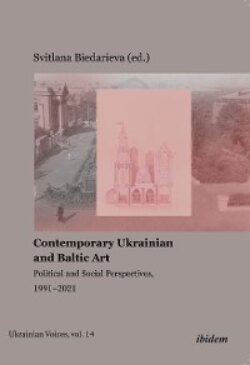Читать книгу Contemporary Ukrainian and Baltic Art - Группа авторов - Страница 14
На сайте Литреса книга снята с продажи.
Outlands
ОглавлениеThe complexity of the center–periphery relations and postcolonial reflection was at the heart of the 10th contemporary art festival exhibition Survival Kit (2018, 2019), co-curated by a glocal team consisting of Solvita Krese, Inga Lāce, Àngels Miralda, and Sumesh Sharma, who were based between Riga, Barcelona, and Bombay.16 Like the Riga Biennial, Survival Kit spotlighted questions about the difficult past and present along with rapid contemporary changes, but framed them through a perspective of an uncertain state and place. Titled Outlands, it focused on a broad range of questions: global geopolitical and migratory issues; hybrid identities; power hierarchies; marginalization due to race, class, religion, or sexuality; and the complexity of the local social and political environment, such as minority politics and the role of the Russian-speaking population and new immigrants in the context of rising right-wing populism. As a concept, “outlands” remained ambiguous and elusive; it was critical towards hegemonic relations and cultural and political hierarchies and aimed to look for alternatives. It sought to create “a confluence of people and perspectives emerging from peripheries,” and to invert “the very meaning of the peripheral—the production of histories and analysis of the world that include those whom the centre would rather forget” (Miralda 2018, 15); yet, it still employed the very same model of center and periphery. It also mirrored a situation typical of contemporary art: its “transnationality” was formed by artists coming from the semi-periphery—such as postsocialist region or the countries of the Global South—whose work addresses the difficulties these locations face, but who are doing this while living in the metropolises of the Global North or are building careers through constant networking with them.
Outlands also referred to intersections of postsocialist and postcolonial discourse, and its artworks reflected issues of belonging, identity, and migration, along with transnational connections and relationality, deconstructing and moving away from nationally oriented perspectives. For instance, in Rerooted Snapshot (2019) by Inga Erdmane, the protagonists were foreigners who had recently moved to Latvia due to their work or family situation and were trying to adapt and integrate into the new environment. Along with small framed photographs of these people in their previous environment, where they are shown posing with family or friends (the artist borrowed these images from their personal archives), the work included photographs of those same people taken as reconstructions of the earlier images and the situations depicted therein. These ordinary, even banal, photos illustrated the fragile, invisible transition between their “new” and “old” lives, and also between the foreign and the local, and the shifting contemporary community of the postsocialist society of Latvia.
Bring Back My Fire Gods (2018) by Kristina Norman once again critically reflected on the exclusionary policy of ethnic nationalism and of the imagined differences between people who share collective identities and the monopolizing power structures that create such differences. The artist was provoked by a public discussion on why it is impossible to include a Russian-language song in the repertoire of the Song Festival, which exists to glorify national unity. In response to this discussion, in her work, an obviously foreigner—Ethiopian-born Swedish opera singer Sofia Jernberg—performed on stage at the empty Tallinn Song Festival Grounds the composition Transvaal by the Estonian composer Märt-Matis Lill. Adapted from an Estonian folk song of Russian origin, its lyrics refer to the distress of people in South Africa during the Anglo-Boer colonial wars at the turn of the twentieth century.
Kristina Norman, Bring Back My Fire Gods, 2018. Image courtesy of the artist.
Through this performance, Norman aimed to deconstruct the myth of nationalism, reminding of different times and cultures that have formed it: the festival tradition was introduced to Estonians by the Baltic Germans in the nineteenth century; the Tallinn Song Festival Grounds are both an impressive example of Soviet modernist architecture and a place closely tied to the national awakening: the Singing Revolution and re-gaining of independence in 1991. Articulating this hybridity, “the artist showed that it is possible to look at the festival, and indeed the nation, as an inclusive amalgam of cultural loans and influences.” (Miralda 2019, 73)
